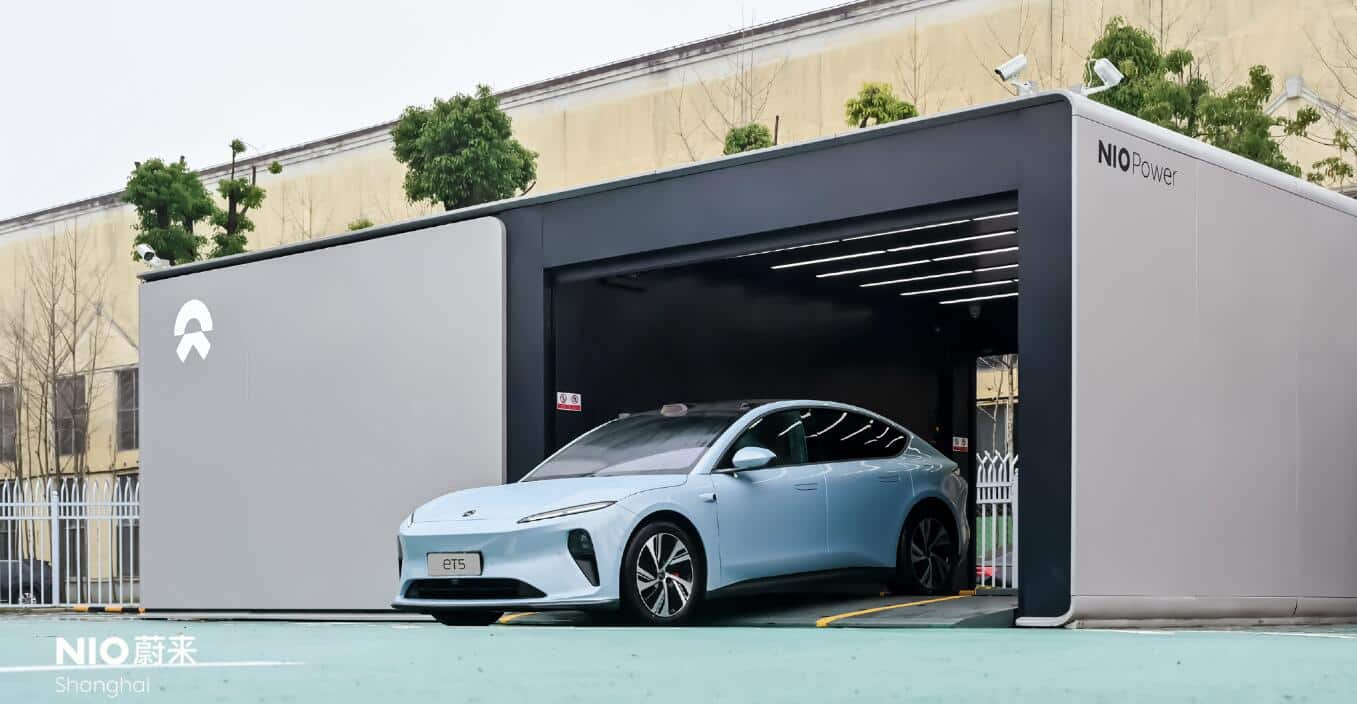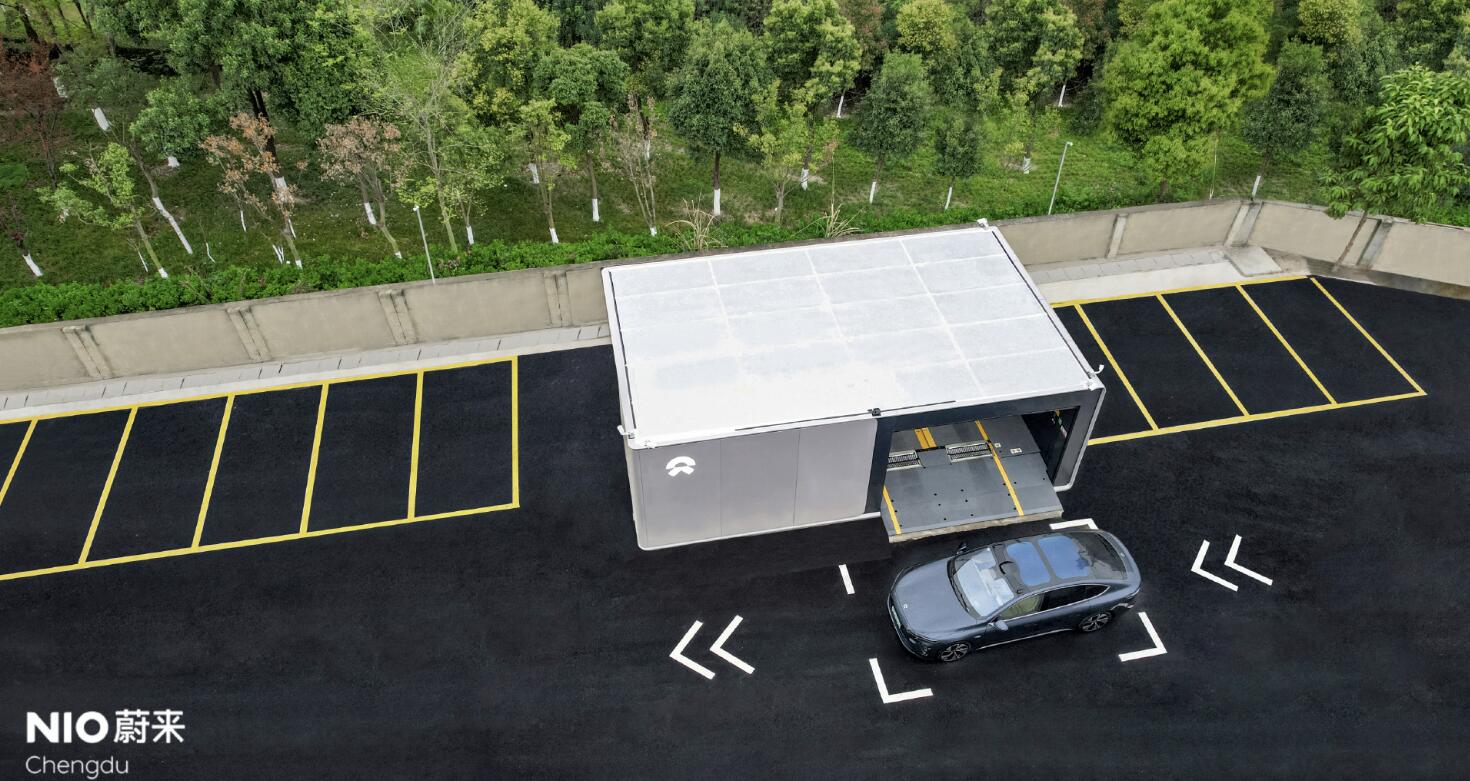Nio aims to have more than 2,300 battery swap stations in China by the end of 2023, and the number stood at 1,342 as of April 13.
(Image credit: Nio)
Nio's (NYSE: NIO) first 10 third-generation battery swap stations went live today in 10 Chinese cities, marking the start of its aggressive infrastructure buildout this year.
The electric vehicle company had said on March 20 that its first 10 third-generation battery swap stations would go live on March 28. But that didn't happen, and Nio only made the next-generation stations' real-life debut that day.
The cities that saw the first third-generation Nio battery swap stations go live were Shanghai, Beijing, Shenzhen, Hefei, Chengdu, Haikou, Wuxi, Zhengzhou, Qingdao and Harbin, according to an article posted today on Nio's mobile app.
The sites for the 10 third-generation battery swap stations were decided by 866 Nio users through the Nio App's wish list feature, according to the article.
As of April 13, Nio has accumulated 1,342 battery swap stations in China, of which 351 are located along highways.
Nio also has 2,451 charging stations, including 14,541 charging piles. Its charging map has access to more than 680,000 third-party charging piles in China.
Nio announced late last year a plan to add 400 battery swap stations in 2023, but that plan was raised to 1,000 on February 21.
William Li, Nio's founder, chairman and CEO, said at the time that the company would further accelerate the deployment of battery swap stations, aiming to have more than 2,300 battery swap stations in China by the end of 2023.
Mass production of Nio's third-generation battery swap stations was well underway, with volume production expected to begin in April and deployment of stations accelerating in May, Li said at the time.
Starting in June, Nio will basically keep building 120-150 battery swap stations per month, he said.
Nio's third-generation battery swap station, released at the Nio Day 2022 event on December 24, 2022, can store up to 21 battery packs, up from 13 for its predecessor generation and five for the first generation of the facility.
This next-generation facility increases the daily service capacity of a single site to 408 services, a 30 percent increase over the second generation.
Notably, some of Nio's third-generation battery swap stations will be equipped with two LiDARs and two Nvidia Orin chips, for a total computing power of 508 TOPS.





